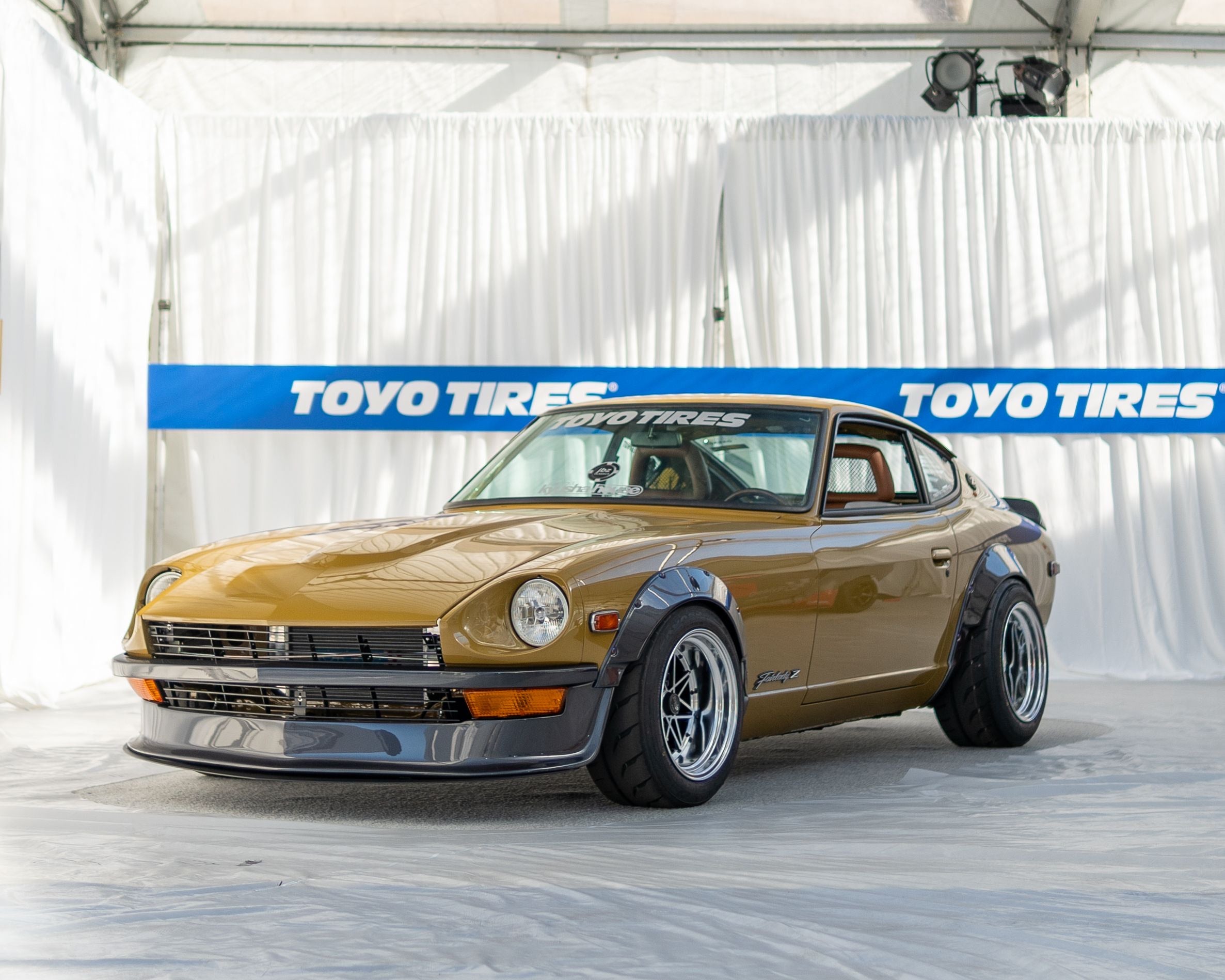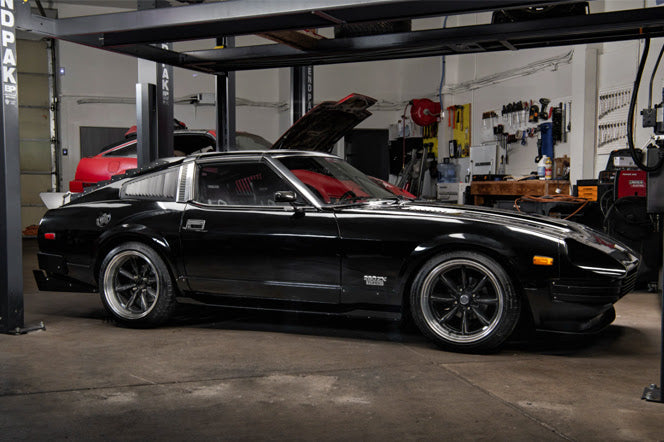Nearly 60% of vintage 240Zs are still running on their original 1970s wiring to power every single electrical component in the car. That means you're looking at nearly five decades of wear and tear on parts that were only designed to last maybe 10 or 15 years. Where the factory systems used to give you a steady 12 volts back in the day, now they can barely hold 10 volts when you're actually running them.
Your Z deserves much better than dim headlights and those unreliable starts that leave you stranded somewhere. I know you love the way it looks with those classic lines and easy mechanical setup. But no one wants to have to explain why the gauges are flickering when they're trying to sell their car. The great news is that modern electrical upgrades bring back that reliability without taking away from what makes your Z authentic.
There are four main improvements that will completely change how your Z's electrical system performs. You can add headlight relays to finally get power where it needs to go, upgrade to a high-output alternator that can actually keep up with what you need now, switch to electronic ignition and get rid of point problems once and for all, and install LED lighting that uses less power while giving you better visibility at the same time. The best part is that most of these modifications are completely invisible once you've installed them. Your next night drive could feel just as confident as when you're cruising on a sunny afternoon.
The first upgrade takes care of the most dangerous electrical problem that's actually sitting right behind your headlight switch.
Table of Contents
Why You Need a Headlight Relay Upgrade
Say you're driving your vintage Z car on a dark two-lane road at night. The factory headlights can barely light up the road ahead of you. Your headlight switch has to carry the electrical power from your battery straight to those dim bulbs. When that much electricity flows through the switch, it creates heat and lowers the voltage that actually reaches your lights - this setup wasn't great even when these cars were brand new decades ago.
The real problem is how the electricity has to travel through your dashboard. Those long stretches of wire create resistance, and this resistance turns into heat over time. In the beginning, the damage is small. But it gets worse over time. If you look through enthusiast forums, you'll find lots of stories from owners who ended up with melted fuse boxes and burned-out switches because they didn't know about this problem.
A headlight relay kit fixes this issue by sending the heavy electrical load directly from your battery to the headlights through a different path. Your original switch just has to turn the relay on and off instead of carrying all of that power - this small difference can make your lights twice as bright and your electrical system safe from damage.
When you install a relay kit, your headlights get the full voltage from your battery instead of the lower power that comes from those long wire runs. The relay takes care of the heavy electricity while your dashboard switch stays cool and protected. The next time you drive at night, you'll see the difference right away. Modern relay technology turns those dim factory lights into headlights that actually light up the road the way they should.

The great news is that installation is pretty easy since most kits plug right into your original wiring harness. All you need are basic hand tools and about an hour of your time to finish the job. Most owners get through the whole process without any problems. Dave's Headlight Relay Upgrade Harness has become very popular with Z car owners because it keeps that factory look.
While you're working on the lights, you should also check your ground connections. If you have a bad ground connection, it'll cancel out any improvements from even the best relay setup.
Clean ground connections make sure that your relay system works the way it should. After decades, corrosion builds up and creates the same resistance as those long wire runs. While you have your tools out, check out the two headlight grounds and the main ground strap that goes to the engine.
Upgrade Your Z with a High Output Alternator
The stock 45-amp alternator in your vintage Z car worked just fine back in the day. But once you start adding upgrades like auxiliary fans, a decent stereo system, or fuel injection conversions, that little unit will have a hard time keeping up. You'll see your headlights start to dim when the fan kicks in, or the voltage drops when you turn up the music. And when you see those lights dimming, that tells you everything you need to know.
The real difference between old and new alternators is about how they control voltage. Your original setup uses an external voltage regulator that needs tougher wiring. Modern, internally regulated alternators make everything easier and give you better reliability at the same time. Modern units get rid of the external regulator problems with cleaner wiring and fewer parts that can break. Your charging system turns into something you can actually count on.
A 60-amp alternator will work with basic upgrades like a modest stereo and some LED lights. You should jump to 80 amps if you're going to add electric fans or a stronger sound system. The 100-amp range will cover just about anything you might want to add - even multiple fans and high-end audio equipment. Before you buy anything, take a minute to think about your future plans. Will you want to add more accessories down the road? It's much easier to go with a bigger alternator now than to swap alternators twice.

Most Z owners add accessories bit by bit over time. As you improve other systems, you'll probably want more electrical power. That's why you should size your alternator for where you're going to end up, not where you are.
The 95 Nissan minivan 110-amp unit has become popular because it bolts right in and gives you plenty of power. GM-style 100-amp alternators give you another direct swap option with easy one-wire hookups. Either one will work much better than your stock unit without needing any big modifications.
You should watch out for bracket alignment problems and belt width mismatches. These small details might look minor. But they can quickly turn an easy upgrade into a frustrating project. Your ammeter will work much better once you get everything hooked up right. Bracket problems cause more headaches with swaps than electrical problems do. You'll spend more time trying to fix alignment than actually installing the unit itself. So it's worth double-checking these details before you order anything. Its great specs won't help you if the pieces don't fit together.
How to Convert Your Z Car to Electronic Ignition
The breaker points in your vintage Z car wear down as the miles add up and create what's known as dwell drift - basically, your ignition timing starts to wander around instead of staying where you set it. Your engine loses its steady beat. You'll feel this problem when you try to start the car after it's been sitting in the garage for a while.
Electronic ignition solves this whole problem once and for all. The guys at Sport Z Magazine ran some dyno tests that showed Pertronix and Nissan electronic ignition distributors produce much cleaner spark traces than worn points ever could. Your engine runs better and starts up every single time. These newer electronic systems give you steady energy that worn mechanical points just can't deliver, and each cylinder fires at the exact time your engine needs it to. Your Z will idle smoother, respond better when you hit the gas, and start right up even after sitting in the garage all winter long.

The swap itself isn't too hard if you take your time with it. Start by removing the old points and condenser first. Then you install the reluctor ring and make sure there's the right gap between the parts - this little detail trips up plenty of people. It's worth double-checking that your ignition coil can handle the electronic module because some of them need a 3.0-ohm coil to work right. Here's where a lot of people make their biggest mistake. They forget to bypass the ballast resistor when they switch over to electronic ignition - this little mistake will leave you stranded on the side of the road because the electronic module won't get enough voltage to fire.
For your electronic ignition to work right, it needs to get clean voltage coming in. The ballast resistor that worked fine with points will stop your new module from pulling in enough power. Your Z will crank and crank but won't start, and you'll be stuck in your driveway or, worse, miles from home.
Keep your old points in the glovebox just in case something goes wrong on a road trip. You can always swap back to points for a little while and file them down on the side of the road if you need to. Veteran Z owners have all been there at some point. No one wants to spend their Saturday night under a streetlight with a point file anymore. The 280ZX electronic distributor makes a solid upgrade when you use it with the right coil - this distributor design gets rid of the common failure points you see in aftermarket electronic conversions. The pickup coil and reluctor wheel are built to factory specifications and tested to last for years and years. Your Z gets an ignition system that can handle decades of driving without the weird problems that some bolt-on electronic kits have.
Make Your Z Car Brighter with LEDs
LEDs are a solid way to make your Z car more visible while you use less power at the same time. When you install these bulbs, your headlights will put out more light on the road, and your taillights will be brighter for the drivers behind you. You'll see the difference immediately when you drive on dark roads, though there are a few details that catch people off guard when they make the switch.
Your turn indicators will probably start to flash too fast after you put in LED bulbs. LEDs use way less power than the old incandescent bulbs your car came with. Because of this lower power draw, your flasher relay thinks one of your bulbs has burned out, and it speeds up the flashing to warn you. The relay can't interpret the lower power draw correctly. You can fix this problem with load resistors, or you can replace the flasher relay with one that's designed for LEDs. Load resistors make up for the power draw that your old bulbs used to pull. LED-compatible relays can read the lower power as normal and work just fine. Either of these fixes will stop the fast flashing without damaging your electrical system.

Some Z car owners don't want to lose that warm amber glow from their original dash lights. The awesome news is you don't have to upgrade everything at once - it makes sense to do your exterior lights first since those affect your safety. You can always work on the gauge cluster later if you convert everything to LED. Your exterior lights control how visible your car is to other drivers on the road. Interior lights only change how the cabin looks and feels but won't help you avoid accidents.
Be careful about cheap LED bulbs from auction sites because they break within a few months. Because of poor quality control, some arrive dead or start flickering from day one. Budget options skip cooling parts. You might also run into problems with polarity since LEDs only work when they're connected with positive to positive and negative to negative.
Sequential tail lights are an even bigger upgrade that gives you a turn signal that flows across the housing. Instead of a basic blink, you get a smooth sweep from one side to the other. Since you're already upgrading, why not add a modern touch that still matches your Z's classic style? These sequential lights give your Z a unique look. The flowing pattern across the housing catches more attention than standard blinking lights. Modern electronics create this effect while you keep the original housing designs that match your car's era.
Build Your Dream Car
Take a minute to remember your own Z and what it needs the most. Does your alternator have a hard time keeping up with everything you're asking from it lately? Does that leave you worried about ending up stuck somewhere? Are your headlights so dim that when you drive at night, it feels risky? Maybe your ignition system makes you question if the car will actually start when you need it to.
These problems usually get worse as time goes on, and each of these upgrades takes care of one particular problem that's been bugging you. But when you put them all together, they turn your old car into something you can count on if you're going to a car show or just taking it out for a weekend drive.
These electrical improvements do something great - they keep what's great about your Z while giving it the reliability you need for the roads we drive on. The balance between keeping it original and making it reliable comes into play with every choice you make when you restore a classic car. Your Z keeps its original look and feel while the electrical systems just work quietly in the background. When you're confident your car will start right up, when the lights work the way they should, and when the charging system does its job - it completely takes away the stress that can ruin weekend drives. You hear about plenty of car lovers who find that when they fix these electrical problems, they actually love their classic even more instead of feeling like they've changed it too much.
Your car still has its classic look and old-school appeal. But now it's got the reliability that lets you actually drive it and have fun with it instead of always worrying about what might go wrong.

Now, let's talk about making your classic ride even better. At Skillard, we know just what Datsun owners need to make their cars everything they want them to be. We've spent years making custom parts just for 240Z, 260Z, 280Z, and other classic Datsun models, and we make sure every part is right for these cars. We make everything from custom bumpers and aluminum door cards to center consoles and spoilers - our catalog has something for every part of your restoration or upgrade project.
Visit us at Skillard.com to see everything we make and find out how we can get you that perfect combination of classic style and modern performance. Which upgrade are you going to tackle first?





